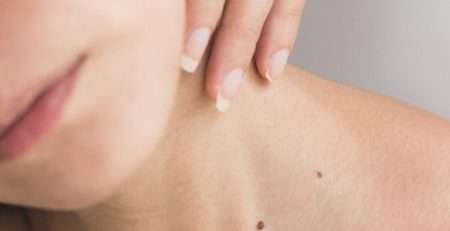Self-Care Remedies for Trigger Points in your Quadriceps

In this post, Board certified myofascial trigger point therapist, Jen Liu, CMTPT, LMT focuses on the Quadriceps Femoris, a group of four critical muscles referred to as the “Four-Faced Trouble Maker”.
Trigger points in the Quadriceps cause weakness, pain, and other problems in the knee including:
- Pain in the Kneecap (Patella)
- “Stuck Patella”
- Kneecap Tracking Problems (“Runner’s Knee”)
- Buckling Knee when Stepping or Running
- Pain on the Inside and Outside of the Knee
- Pain in the Thigh (Front, Inside and Outside)
Perform the following tests and self-care tips to identify and correct possible trigger points in your Quadriceps and enjoy a safer, stronger running season!
Quick Self-Tests to Tell if You have Trigger Points in Your Quadriceps Femoris:
Follow the instructions below to test whether you have myofascial trigger points in the “Four-Faced Trouble Maker”.
Heel to Buttocks Test


While lying on your stomach, grasp the top of the foot or ankle with the same side hand and pull the heel straight toward the buttocks. A Passing result is when you can bring your heel to touch the buttocks comfortably. A Failing result occurs when the heel remains further away from the buttocks (as shown). The further the heel is from the buttocks the greater the amount of myofascial dysfunction and trigger points present.
Lateral and Medial Quads


To further isolate the lateral quads (Vastus Lateralis), pull the heel toward the opposite buttock. To isolate the medial quads (Vastus Medialis) pull the heel toward the outside of the buttock, as shown. Again, in both lateral and medial tests, a Passing result is being able to touch the heel to the buttocks.
3-Step Simple Self-Care Remedies
Here are simple self-care remedies for treating myofascial trigger points in your Quadriceps Femoris. Repeat 2-3 times per day and observe how your flexibility and pain improves! Continue working daily on your Quadriceps until you pass or greatly improve your Self-Tests results.
Step 1: Warming Up with Moist Heat

Step 2: Compression
To compress trigger points in the Quadriceps, position yourself and your self-care tool as shown.
Roll over the front, inside and outside of the thigh. When you find a tender spot, press into the muscle to pain tolerance (“good pain” – not pain that is sharp or makes you want to withdraw). Hold for 10 seconds while completing at least two full breaths in and out. Then continue searching for more tender spots until the entire Quadriceps muscle is covered.
Step 3: Stretching for the Quadriceps
Stretching after compression and especially before running can greatly improve the function of your Quadriceps and prevent injury to your knee. Using a counter top or sturdy chair back like a ballet bar for balance, pull your heel back toward your buttocks. First, pull the heel straight up toward the middle of the buttocks. Then bring the heel toward the opposite buttocks (it may help to use the opposite hand). Finally, bring the heel to the outside of the same buttocks. In each position, hold for 20 seconds and repeat 2 times.










